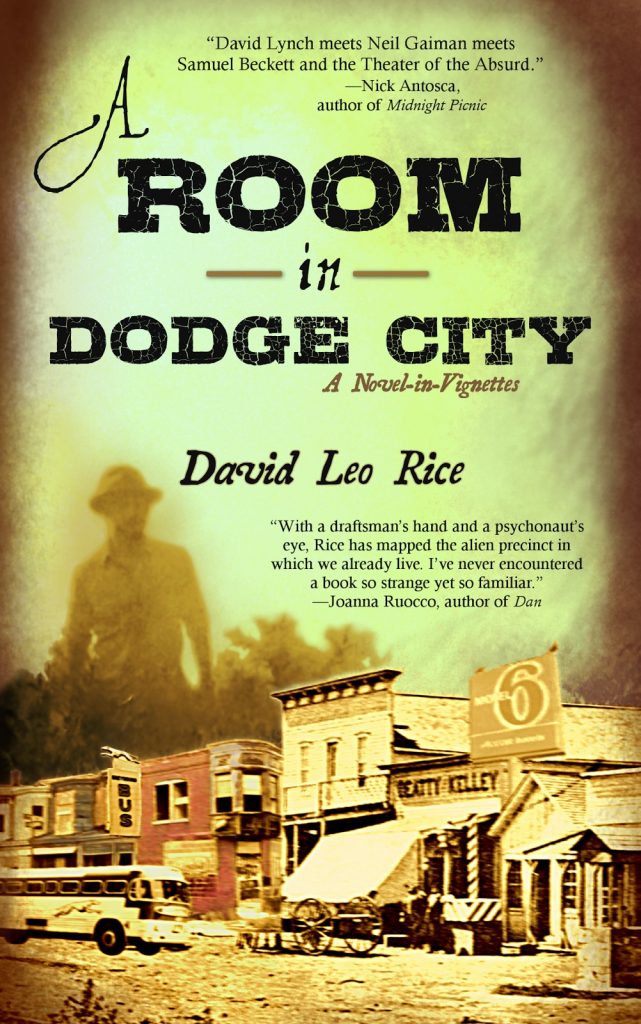(1) YOUNG PEOPLE READ NOT SO OLD SFF. As part of a planned change-of-pace, James Davis Nicoll unleashed the Young People Read Old SFF panel on some very new sf indeed — “Cat Pictures Please” by Naomi Kritzer.
We’ve cycled around to another recent story for my volunteers. I got a lot of suggestions for Naomi Kritzer’s “Cat Pictures Please”, a Hugo and Locus winning short story about an artificial intelligence whose desire to assist humanity is sadly somewhat larger than its ability to do so. Well, almost everyone likes cats and this has lots of cats in it. The AI is one of the helpful variety and who doesn’t like an Emma Woodhouse interfering in lives? It seemed like a safe choice. But I’ve been wrong before….
“Cat Pictures Please” is available at Clarkesworld.
(2) DOWN THE BLOCK FROM ZENDA. Lois McMaster Bujold’s “The Prisoner of Limnos”: a Penric & Desdemona novella in the World of the Five Gods. Book 6 is out. Bujold told Goodreads followers, “The novella topped out at 44,950 words, not including the title page.”
In this sequel novella to “Mira’s Last Dance”, Temple sorcerer Penric and the widow Nikys have reached safety in the duchy of Orbas when a secret letter from a friend brings frightening news: Nikys’s mother has been taken hostage by her brother’s enemies at the Cedonian imperial court, and confined in a precarious island sanctuary. Their own romance still unresolved, Nikys, Penric, and of course Desdemona must infiltrate the hostile country once more, finding along the way that family relationships can be as unexpectedly challenging as any rescue scheme.
(3) PENRIC AND OTHER COVERS. Michaeline Duskova from Eight Ladies Writing, who says she loves Ron Miller’s cover for The Prisoner of Limnos, interviewed Lois McMaster Bujold about choosing ecovers, and it turns out she has quite a bit to say about the process: “Questions about Covers with Lois McMaster Bujold”.
EMD: For the early Penric covers, I know you asked for fan input about the public domain pictures you used, and I believe you mentioned that your agency helped you with the typography. Before that, did you have much input in the covers of your traditionally published books? What was the most useful piece of advice you got when you were choosing your own covers for the e-publications? What kind of parameters did you use for choosing the public domain pictures? And can you share any websites you found helpful in your search for a cover?
LMB: My input on my traditional-publisher artwork has varied over the years, from none to intense. There seems to be no discernible relationship between the amount of my involvement and the results. I’ve had great covers with no involvement, disappointing covers with lots, and the other way around, apparently at random.
I don’t recall I had much advice when I embarked on doing e-covers years ago with The Spirit Ring. (That would have been back in late 2010.) My helper putting them together could at the time only work with one image, cropping but no photoshopping, so options were limited. I wanted to choose historical paintings for the fantasies, because not only could I see what I was getting, but they were already at a high level of artistic accomplishment. Bad photoshopping/image collage is much worse than none, amateurish and off-putting, and any hint of photography was very wrong for the fantasy mood. As we’ve worked together over the years, my e-wrangler and I have both grown better at sorting through the challenges.
(4) ATTENTION ALASTAIR REYNOLDS FANS. Infinite Stars, a mixed reprint/original anthology edited by Bryan Thomas Schmidt, contains a lot of well-known stories. In the mix is a brand new Alastair Reynold story.
The book contains an entirely new 16,000 word story of mine, entitled “Night Passage”, which happens to be set in the Revelation Space universe. The story revolves around the discovery of the first “Shroud”, a class of alien artefact which goes on to play a significant role in the future history. My story took about five years to write, so I am very pleased to finally see it both completed and in print.
Here’s the list of stories in the anthology, with the new ones in bold. [Updated courtesy of Greg Hullender.]
- “Renegat” (Ender) by Orson Scott Card
- “The Waters Of Kanly” (Dune) by Brian Herbert & Kevin J. Anderson
- “The Good Shepherd” (Legion of the Damned) by William C. Dietz
- “The Game Of Rat and Dragon” by Cordwainer Smith 1956 Hugo Best Story, 1955 Galaxy SF, October
- “The Borders of Infinity” (Vorkosigan) by Lois McMaster Bujold
- “All In A Day’s Work” (Vatta’s War) by Elizabeth Moon
- “Last Day Of Training” (Lightship Chronicles) by Dave Bara
- “The Wages of Honor” (Skolian Empire) by Catherine Asaro
- “Binti” by Nnedi Okorafor TOR.COM, 2015; 2016 Nebula/Hugo/BFA Best Novella
- “Reflex” (CoDominium) by Larry Niven and Jerry Pournelle
- “How To Be A Barbarian in the Late 25th Century” (Theirs Not To Reason Why) by Jean Johnson
- “Stark and the Star Kings” (Eric John Stark) by Leigh Brackett and Edmond Hamilton
- “Imperium Imposter” (Imperium) by Jody Lynn Nye
- “Region Five” (Red Series) by Linda Nagata
- “Night Passage” (Revelation Space) by Alastair Reynolds
- “Duel on Syrtis” by Poul Anderson
- “Twilight World” (StarBridge) by A.C. Crispin
- “Twenty Excellent Reasons” (The Astral Saga) by Bennett R. Coles
- “The Ship Who Sang” by Anne McCaffrey
- “Taste of Ashes” (Caine Riardon) by Charles E. Gannon
- “The Iron Star” by Robert Silverberg
- “Cadet Cruise” (Lt. Leary) by David Drake
- “Shore Patrol” (Lost Fleet) by Jack Campbell
- “Our Sacred Honor” (Honorverse) by David Weber
(5) KGB. Fantastic Fiction at KGB reading series hosts Ellen Datlow and Matthew Kressel present Grady Hendrix and David Leo Rice on Wednesday, November 15, 7 p.m. at the KGB Bar (85 East 4th Street, just off 2nd Ave, upstairs.).
Grady Hendrix
Grady Hendrix has written about the confederate flag for Playboy magazine, covered machine gun collector conventions, written award shows for Chinese television, and answered the phone for a parapsychological research organization. His novel, Horrorstör, about a haunted IKEA, has been translated into 14 languages and he’s also the author of My Best Friend’s Exorcism, now out in paperback. He recently wrote Mohawk, a horror movie about the War of 1812 which premiered at Montreal’s Fantasia Film Festival. His latest book is Paperbacks from Hell, a non-fiction history of the horror paperback boom of the Seventies and Eighties.
David Leo Rice
David Leo Rice is a writer and animator from Northampton, MA, currently living in NYC. His stories and essays have appeared in Black Clock, The Believer, The Collagist, Hobart, The Rumpus, Vol. 1 Brooklyn, and elsewhere, and his animations have played at festivals around the world. A Room in Dodge City, the start of a trilogy, is his first novel. It won the 2016 Electric Book Award and was published this year. He recently finished a standalone novel, Angel House.
(6) TRIVIAL TRIVIA
Brian May, founding member of Queen, took thirty years to get his PhD.
(7) TODAY’S DAY
International Animation Day
The International Film Association was originally established in France, and was organized for the purpose of recognizing all forms of cinema and art. Among them was Animation, and thus they developed International Animation Day in 2002 to serve as the pinnacle event in the celebration of the rising art of animation.
(8) TODAY IN HISTORY
- October 28, 1962 — Fireball XL5 premiered on television.
- October 28, 1994 — Stargate, the motion picture, premiered in theaters on this day.
(9) TODAY’S BIRTHDAY BOY
- Born October 28, 1951 – Joe Lansdale
- Born October 28, 1982 – Matt Smith
(10) COMICS SECTION
- John King Tarpinian surprised me with a stfnal reference in Garfield.
- And he found an Asimov reference in today’s Dilbert.
- Elsewhere, a Halloween comics trope is about to be disrupted by Lio.
(11) DOING COSMOLOGY. Edge hears the word from UCSD astrophysicist Brian G. Keating in “Shut Up And Measure”.
What is this cosmic hubris that makes us feel so important about the Universe and our place within it? This is the question that I’m grappling with right now. I’m trying to experimentally shed some light on these extremely heated discussions that have taken over cosmology in the last few months with a debate about the deep past of cosmology and the implications for the future.
Specifically, what concerns me is whether we can drill down to the first moments, nanoseconds, microseconds, trillionths of a second after the Big Bang. And if we do, is it really going to tell us something about the origin of the Universe, or is it merely tacking decimal places onto the primordial collection of stamps? My question is one of bringing data. When people were waxing philosophic and having existential crises of faith about their equations, Feynman used to say, “Shut up and calculate.” And that meant that the implications of what you were doing metaphysically, philosophically, and otherwise didn’t matter; what mattered were the answers that you got at the end of the calculation.
A lot of what my colleagues and I do is shut up and measure….
(12) THROWING OUT THE FIRST PITCH. As a Dodgers fan I haven’t found as much to feel good about in the World Series as I’d hoped, but this may make up for some of it — “This 7-Year-Old Girl Is Pitching at the World Series With a 3D Printed Hand”.
On Saturday, the Los Angeles Dodgers and the Houston Astros will meet for Game 4 of the World Series. As with any Major League Baseball game, the competition will kick off with a ceremonial pitch. But this one will be especially awe-worthy, featuring a 7-year-old girl with a 3D-printed hand.
Hailey Dawson will fling the first baseball using a prosthetic hand that allows her to grip objects despite missing and underdeveloped fingers on her right side.
(13) ANOTHER ONE BITES THE DUST. Gizmodo keeps track of this sort of thing: “$1,000 Tea Infuser Heavily Discounted as Company Crashes and Burns”
You’re probably reading the tea leaves here, and guessing that Teforia is hinting that the spectacular, $118 million implosion of Juicero might be contributing to its troubles of educating the market about the value of an over-engineered machine that no one needs. For anyone keeping count, Teforia only wasted $17 million, thank you very much.
(14) LIVE PLAN 9 READING. If you wondered what happened to Laraine Newman, you can find out tomorrow night at the Largo in LA: “Dana Gould presents A Live, Stage Reading of Ed Wood’s… Plan 9 from Outer Space”.
(And they’ve done this at least once before.)
(15) DOING WORK. Thor: Ragnarok actor/director Taika Waititi told a New Zealand site about his new projects: “Taika Waititi is busy, reportedly looking to make US What We Do in the Shadows show”.
He is a busy man. Fresh for releasing his Marvel superhero film, Thor: Ragnarok, reports are circulating saying Taika Waititi is about to reboot What We Do in the Shadows.
Waititi is developing plans for a television version of the Kiwi vampire comedy for American television, according to film site Fandago.
He and Jemaine Clement are also working on a What We Do in the Shadows spinoff for TVNZ. Called Paranormal Unit, the TVNZ show is described as “Motorway Patrol meets The X-Files” and follows the Wellington Police’s investigations into supernatural crime.
A TVNZ spokeswoman said the rumoured project in the US was different to what they had commissioned. She confirmed Paranormal Unit would be filmed in New Zealand.
Waititi told Fandango that he was in talks to create a US version of What We Do In The Shadows, which would be filmed in the US, for an American television audience.
He confirmed that the New Zealand spinoff would be released in 2018, as promised.
(16) CLARKE CENTER PUMPKIN PODCAST. The Arthur C. Clarke Center for Human Imagination’s Into the Impossible podcast engages the season in Episode 11, “Stranger Things (While Podcasting); or: On Fear and Imagination with Christopher Collins”
In honor of Halloween, we’re exploring the relationship between fear and imagination. First, a story about when the production of this very podcast was visited by a demon from the Upside Down (maybe?). Then, a conversation with Christopher Collins, author of Paleopoetics: The Evolution of the Preliterate Imagination, on the auditory and visual imagination, the evolution of language, and how human culture has spent so much time telling itself scary stories.
[Thanks to John King Tarpinian, JJ, Cat Eldridge, ULTRAGOTHA, Michaeline Duskova, Errol Cavit, and Carl Slaughter for some of these stories. Title credit goes to File 770 contributing editor of the day Jon Meltzer.]




